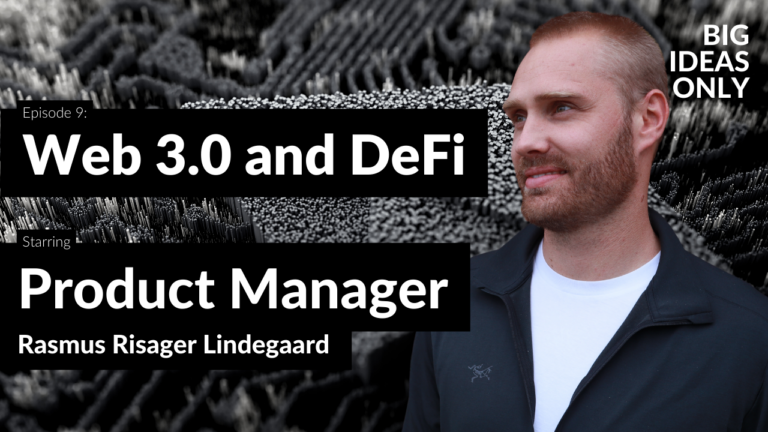
You probably already know the answer.
It is to create awareness and to always be top of mind with your customers and, as importantly, potential customers. If we look at the statistics, you should post 1-2 times a day on your LinkedIn profile and 2-4 times a day on your Facebook page.
With this knowledge available, why are there so few B2B companies that actually succeed in content production?
Simply put, because too much content has to be posted for it to be created organically. This is especially true if you want lasting quality that makes you appear as the expert you are in your field.
My argument is that most organizations are not at all equipped to post on such a scale because they have not found the right strategy to create quality content continuously.
I have edited the process down to four steps, so that you can get started on optimizing your content production today.
Step 1: Know Your Customer
It seems logical to start here.
If you’re going to create content with a purpose, you have to aim for someone or something. And the more precise your aim is, the sharper your content will be. It makes more sense to hit the bullseye with one dart than to hit the whole dart board with twenty. So, start by brainstorming who your dream customer is.
Once he or she has been found (because, yes, it must be so specific that it is an actual person and not just the company), list all the different needs and concerns he or she has in connection with a collaboration with you. Once all these things are written down, prioritize them in order of what you think is most important.
Remember that it is easier to relate to someone named Poul than to the entire company Vestas. So, make it as specific as possible for your own sake.
And we are off.
Step 2: Create Quality Core Content
Now you need to create content.
More specifically, what we in our office call a “content-rich piece of core content” must be created. The reason why we talk so much about creating this core content is because core content is the foundation for creating a whole lot of other good content for different media – online and offline.
Recommended Reading
It can simply be turned into more good content.
A piece of core content can typically be a webinar, a presentation, or a podcast. All the good points and quotes can turn into catchy LinkedIn posts and professional blog posts for your clients later.
The greater the core of the core content, the more chunks of content can be created.
In some cases, companies already have delicious core content lying around. Content that they had no idea could be used further. In other cases, it makes more sense to start from scratch and create some completely new core content.
If the latter suits you, set up an interview with one of the bright minds in the company. One of those who knows all the details of the specialized services you offer, systems you develop or products you produce. Don’t forget to press record.
Just one thirty-minute in-depth interview can create a lot more content than you think.
So, let’s get started!
It should be said that core content is only 5% of your entire content production. The rest is just mass production. So, create some delicious core content from the start, then you don’t have to spend brain mass on being creative and inventive in the production of all your other content.
Step 3: Mass Produce Your Content Universe
Once your core content is in place, the real fun is about to start.
A piece of core content can become a podcast, several blog posts, posts on social media and a video for YouTube.
Why even bother creating content on all these platforms?
Because, for knowledge driven B2B companies, there is good money in sharing their knowledge. By sharing knowledge, you show that you actually know what you are talking about. Instead of hiding all your knowledge, you must instead convey it to your customers (and future customers).
In this way, you will come across as the expert company that you are.
There is a handful of media that are important to look into if you have a knowledge driven B2B company that wants to create awareness and appear as a thought leader in its industry.
I have listed them in random order below:
- First of all, the podcast. The only medium where you get up to an hour and a half of uninterrupted speaking directly to your customers. The podcast is also an excellent example of core content.
- A company blog is where your knowledge is perpetuated – and can be searched on Google until you delete the articles yourself.
- LinkedIn and Facebook require multiple postings daily. Here you easily hit new potential customers with your catchy posts.
- Email marketing is another step you can take using your core content. Here, you can share your blog posts with people who are already in your email flow.
- YouTube is the world’s second largest search engine. and people (your customers) love to go into a video coma and be inspired by your words.
So the next time you present at a workshop, start by setting up a proper microphone and a camera over in the corner. Then the foundation is in place for you to create a lot of extra content based on something you would have done anyway.
Step 4: Plan the release of your content
The last step is to plan out when all your content from step 3 will enter the virtual world.
The key here is to plan the release of your content vertically in your calendar instead of horizontally (an idea I stole from the Facebook group guru, Trine Ravnkilde):
– So, every Monday for a month, a certain type of content must be shared. It could, for example, be quotes from your core content.
– Every Tuesday for a month you share audio clips from your core content.
– Every Wednesday for a month you share tips and tricks
– Etc.
In this way, you create a dynamic and variation in the content you post online. At the same time, you ensure that the recipients do not get the feeling that there is a theme, but that the content was created organically.
Now you can post content on social media every day without spamming your followers into a frenzy.
Once you put a professional mindset on the creation of content and systematize its production, it suddenly isn’t such a big mouthful.
This article is living proof that this formula works.
This is written based on a piece of core content – more precisely a presentation Mikkel Svold did for Dundee University.
If you log in to your LinkedIn and click on Montanus’ profile, you will find the same piece of core content configured for several different SoMe posts.
The mantra is “work smarter, not harder”. So why not make the most of your core content instead of struggling with a lack of inspiration to post every day?














